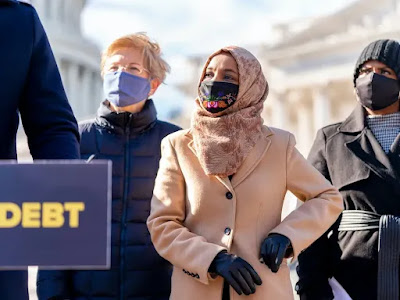President Biden promised college borrowers $10,000 in student-loan forgiveness when he was on the campaign trail. He has yet to deliver on that promise.
Some progressives urge Biden to forgive more student debt. The NAACP said, "$10,000 is not enough, We're calling on our elected officials to cancel federal student loan debt with no means-testing." Senators Elizabeth Warren and Chuck Schumer want Biden to forgive $50,000 per person in student debt.
Surprisingly, some progressives criticize the very idea of blanket student-loan forgiveness. The Washington Post, perhaps America's most progressive newspaper, published an editorial saying Biden's plan "is yet another taxpayer-funded subsidy for the middle class." The Brookings Institution, a left-of-center think tank, stated bluntly, "One-off, across-the-board forgiveness is capricious and unfair."
USA Today, another progressive newspaper, expressed concern that Biden's student-loan forgiveness plan is complicated by "soaring inflation." And CNN, which is generally supportive of Biden's policy agenda, recently reported that Biden's student-debt cancelation plan "might not be such a great idea."
Why are influential progressive organizations backing away from President Biden's plan to give $10,000 in debt forgiveness to the vast majority of student borrowers?
I think there are two reasons:
First, $10,000 in student-debt forgiveness is a pittance when the average student borrower leaves college with three times that amount of debt, and several million college graduates have debt exceeding $100,000.
As NAACP President Derrick Johnson put it, canceling $10,000 in student debt would be "like pouring a bucket of ice water on a forest fire. In other words, it won't do anything, especially for the Black community." Johnson called Biden's plan "a slap in the face."
Secondly, I think there is growing concern that the federal student loan program has run amok and that the Department of Education is concealing the true default rate. The feds have already allowed student borrowers to skip their monthly loan payments for two and a half years at great expense to taxpayers. Granting blanket student-debt forgiveness might plunge the program even further into insolvency.
It is disappointing that congressional critics of Biden's debt forgiveness proposal have offered no alternatives other than even more extravagant debt forgiveness.
In my view, our nation won't begin to get the federal student loan program under control until Congress enacts these three reforms:
- The federal government should bar the venal for-profit college industry from participating in the student-loan program.
- The Parent Plus program, which has brought so much suffering to minority and low-income families, should be abolished.
- Distressed student borrowers should have reasonable access to the bankruptcy courts.

















